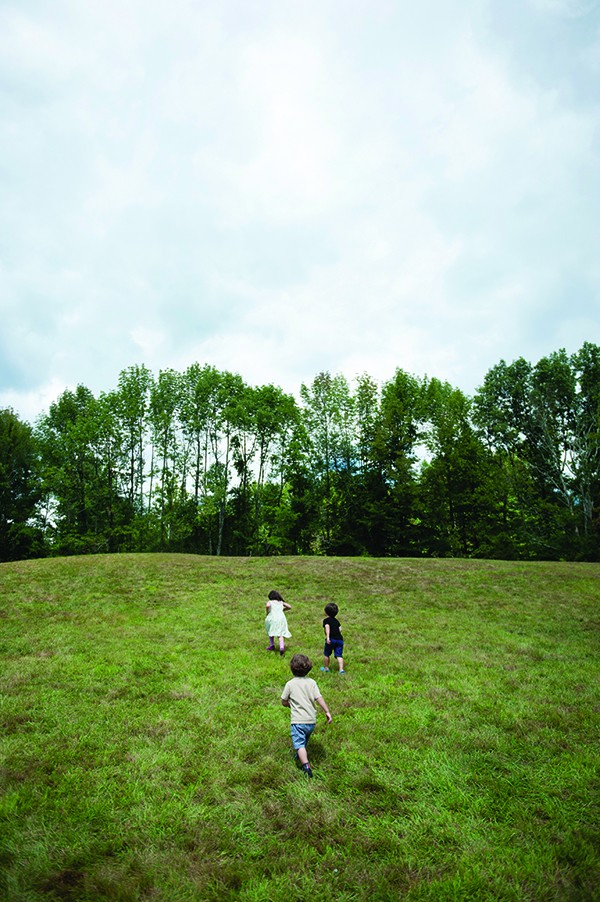"Given a chance, a child will bring the confusion of the world to the woods, wash it in the creek, turn it over to see what lives on the unseen side of that confusion."
—Richard Louv, from Last Child in the Woods
When he coined the phrase nature-deficit disorder in his bestselling Last Child in the Woods (Algonquin Books, 2005), Richard Louv hoped it would resonate with readers. He'd noticed that the children of the baby boomers and older generations were growing up to know the environment intellectually, not intimately. Louv is a journalist who, for the past 30 years, has written about rebuilding community through increased connection with the natural world. Louv cofounded and now chairs the Children & Nature Network, which is helping to build a movement to reunite children and wilderness for future generations. Louv's 2012 book, The Nature Principle, expands on his earlier work, documenting the effect of nature-deficit on adults and promoting balance between the environment and technology. At the core of Louv's work is an encouragement to reimagine our relationship with the wild. On October 21, Richard Luov will give a talk titled "The Nature Rich Life" at SUNY New Paltz Lecture Center, Room 100. Tickets are $13/$18.
In your book, Last Child in the Woods, you coined the term, nature-deficit disorder, which sounds like a reference to psychological terminology. How did you come to name this phenomenon?
I created that term to serve as a catchphrase. I always make clear that it’s not a medical diagnosis, but a useful term to describe the human costs of alienation from nature, as suggested by recent research. Among them: diminished use of the senses, attention difficulties, higher rates of physical and emotional illnesses, a rising rate of myopia, child and adult obesity, and other maladies.
From homesteaders to hunters to wayfinders to rock climbers, people from all walks of life enjoy the outdoors in their own ways. So why is nature deficit such a pervasive condition?
Human beings have been urbanizing, then moving indoors, since the invention of agriculture and, later, the Industrial Revolution. Social and technological changes in the past three decades have accelerated that change: poor design of cities, neighborhoods, homes, schools, workplaces; media-amplified fear of strangers; real dangers in some neighborhoods, including traffic and toxins; fear of lawyers (in a litigious society, families, schools, communities play it safe, creating “risk-free” environments that create greater risks later); the “criminalization” of natural play through social attitudes, community covenants and regulations, and good intentions; ecophobia, in David Sobel’s term (children are conditioned at an early age to associate nature with environmental doom). Much of society no longer sees time spent in the natural world and independent, imaginary play as “enrichment.” Technology now dominates almost every aspect of our lives. Technology is not, in itself, the enemy; but our lack of balance is lethal. The pandemic of inactivity is one result. Sitting is the new smoking.
What do you mean by "risk-free environments that create greater risks later”? Can you expand on that?
Risks in the form of physical challenges (such as climbing trees or even as simple as running), which are a part of growing up. Taking manageable risks mediate the greater risks of child obesity, mental depression, and other illnesses associated with the sedentary lifestyle. Also, learning to deal with small risks when you're young helps you deal more effectively with truly big risks when you're older.
A lot of the ways you suggest people be outside more sound like the childhood of older generations (backyard camp-outs, neighborhood play-watch groups, going fishing, etc). But many parents these days don’t spend a lot of time outside, and younger parents often didn't have that free-range childhood. What happened that people need instruction on this now?
The causes are deeply rooted, such as the over-organized childhood, the general devaluing of unstructured play, fear and a shift in societal priorities.
Some families and areas are able to continue the outdoor traditions and experiences of decades past. Others are connecting to nature in different and sometimes new ways. If we want our children or grandchildren to experience nature, we’ll need to be more proactive than parents of past generations.
Be a hummingbird parent. As one parent says, “I tend to stay physically distant to let them explore and problem solve, but zoom in at moments when safety is an issue (which isn’t very often).” Notice that she isn’t hovering over her kids with nature flash cards. She stands back and makes space for independent nature play—albeit not as free as she experienced as a child, this play is important nonetheless. Teach your child to watch for behaviors more than for strangers. Create a play-watch group and ask fellow parents to sit on front stoops or porches or lawns several hours a week; that way, they are available at a distance as children play. Encourage kids to do nature activities together. Some young people are creating their own kids’ nature clubs. Create or join a family nature club. Nature Clubs for Families are beginning to catch on across the country; some have membership lists of over 1000 families. The idea is that multiple families meet to go for a hike, garden together, or even do stream reclamation. We hear from family nature club leaders that when families get together, the kids tend to play more creatively — with other kids or independently—than during single-family outings. Children & Nature Network’s Nature Clubs for Families offers a free downloadable guide on how to start your own. Ultimately we need the kind of cultural change that families in every kind of neighborhood (urban, suburban and rural) can create themselves and create it now.












